
Zool: Ninja of the Nth Dimension is a platform game written for the Amiga by Gremlin Graphics and published in 1992. It was marketed as a rival to Sega's Sonic the Hedgehog. Zool was ported to other platforms and followed by Zool 2 in 1993.

X-COM: UFO Defense is a 1994 science fiction strategy video game developed by Mythos Games. It was published by MicroProse for DOS and Amiga computers, the Amiga CD32 console, and the PlayStation.

Gobliiins is a puzzle adventure video game series, consisting of four entries, released by Coktel Vision for the Amiga, Atari ST, DOS, and Macintosh platforms. The first three titles were released in the early 1990s, the fourth in 2009. The visual look of the series and its characters was created by French artist Pierre Gilhodes, whose style was used in another game from Coktel Vision: Woodruff and the Schnibble of Azimuth.
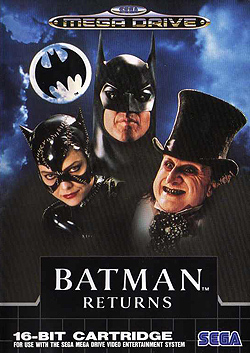
Batman Returns is a 1992 beat 'em up video game for various platforms based on the film of the same name. The Sega console versions were published by Sega while the NES and Super NES versions were developed and published by Konami. The MS-DOS and Amiga versions were also published by Konami, but were developed by Spirit of Discovery and Denton Designs respectively. An Atari ST version by Konami was also advertised, but never released. There is also an Atari Lynx version, published by Atari Corporation.
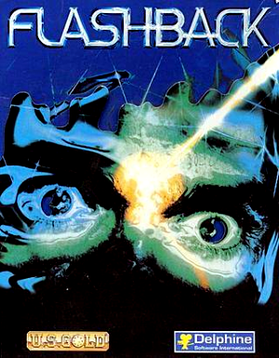
Flashback, released as Flashback: The Quest for Identity in the United States, is a 1992 science fiction cinematic platform game developed by Delphine Software of France and published by U.S. Gold in the United States and Europe, and Sunsoft in Japan.
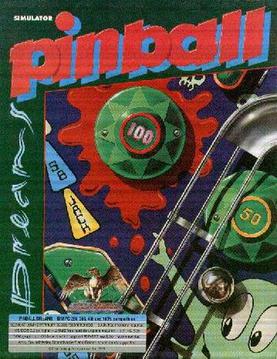
Pinball Dreams is a pinball simulation video game developed by Digital Illusions and originally released for the Amiga in 1992. It spawned several sequels, including Pinball Fantasies and Pinball Illusions. The MS-DOS port was digitally released by Rebellion Developments along with its sequel and Pinball Mania on February 22, 2011 on GOG.com with support for Microsoft Windows. It received an OS X build on April 23, 2013; and a Linux build on August 19, 2014.

Syndicate is an isometric real-time tactical and strategic game from Bullfrog Productions created in 1993, and released for a variety of platforms beginning with the PC and Commodore Amiga. It is the first title in the Syndicate series. Set in a dystopian future in which corporations have replaced governments, Syndicate puts the player in control of a corporation vying for global dominance.
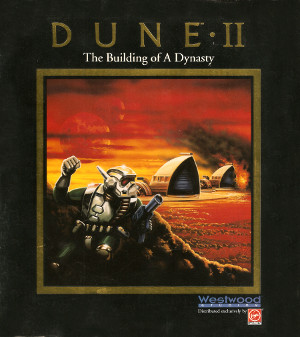
Dune II: The Building of a Dynasty is a real-time strategy Dune video game developed by Westwood Studios and released by Virgin Games in December 1992. It is based upon David Lynch's 1984 film Dune, an adaptation of Frank Herbert's science fiction novel of the same name.

Epic is a space combat simulation game developed by Digital Image Design and published by Ocean Software for the Commdore Amiga and Atari ST in early 1992. A port to MS-DOS also appeared in the same year, followed by a version for the NEC PC-9801 in 1993. A sequel, titled Inferno, was released in 1994 for PCs only.

Kajko and Kokosz or Kayko and Kokosh is a Polish comic book series by Janusz Christa that debuted in Poland in 1972 and was published primarily until 1992. Mixing history and fantasy tropes it is centered on light-hearted and often comedic adventures of two Slavic warriors named Kajko and Kokosz, loosely resembling both Asterix and Obelix, as well as two personalities from Christa's earlier series on Kajtek i Koko. The series consists of 20 comic albums, as well as a number of shorter stories published in various magazines. In 2006, a short 3D animated movie was made.

Curse of Enchantia is a graphic adventure game developed and released by the British video game company Core Design for MS-DOS and the Amiga in 1992. The game tells the comic fantasy story of Brad, a teenage boy from modern Earth who was magically abducted to the world of Enchantia by an evil witch-queen. He needs to escape and find a way back to his own dimension.
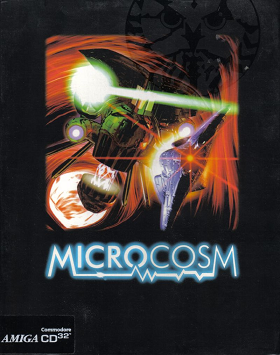
Microcosm is a 3D rail shooter video game developed and published by Psygnosis in 1993. It was originally developed for the FM Towns, and also ported for the Sega Mega-CD, Amiga CD32, 3DO, and MS-DOS. Microcosm featured realistic FMV animation, with the graphics being rendered on Silicon Graphics workstations. The game is either in first-person or third-person view depending on the gaming system.

Electro Man, originally distributed in Poland under the title Electro Body, is an MS-DOS platform game developed by the Polish company X LanD Computer Games. It was originally released in Poland by xLand in 1992, and later published by Epic MegaGames in the United States in 1993; apart from the changed title, the Electro Man release contains some changes, such as upgraded graphics. Though initially offered under a shareware license, the game was released as freeware by the developer on June 25, 2006, under the Creative Commons Attribution-ShareAlike 2.5 license. The player controls a cyborg named "Jacek", who must get through all the areas of a space base while destroying enemies.
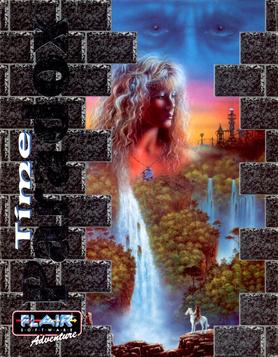
Time Paradox is a point-and-click adventure game developed and released by Flair Software for the MS-DOS in 1996 only in Europe.

Tajemnica Statuetki is a Polish-language adventure game developed and published by Metropolis Software House for DOS-based computers in 1993. While it was never released in English, it is known in the English-speaking world as The Mystery of the Statuette. The game was conceived by a team led by Adrian Chmielarz, who used photographs taken in France as static screens within the game. The first title in the adventure game genre that was produced in Poland, its plot revolves around a fictional Interpol agent named John Pollack trying to solve a mystery associated with the thefts of ancient artifacts around the world.

Mózgprocesor is a Polish video game created in 1989, and published in 1990 by Computer Adventure Studio for ZX Spectrum and the Atari 8-bit family (1991). It was Computer Adventure Studio's first and last game. It was created by ex-Atari alumni Piotr Kucharski, Krzysztof Piwowarski and Wiesław Florek. The team had previously created Smok Wawelski in 1987. The script was created within an hour and the whole game was ready after six weeks, without professional graphic programs or documentation. Reviews of the title were featured in Bajtek 10/1998 and Top Secret 1/1990, Top Secret 2/1990 also included an interview with the developers, which at the time was unprecedented for a Polish game.

Polanie is a historical real-time strategy video game developed by MDF and published by USER for DOS and Microsoft Windows in 1996. An enhanced CD version was released the following year.
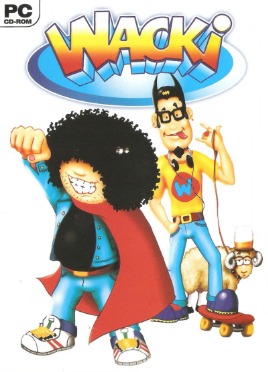
Wacki: Kosmiczna Rozgrywka is an adventure game by Seven Stars Multimedia released on July 1, 1998 for Windows.
Kayko and Kokosh is a Polish-language animated series based on the comic series Kajko and Kokosz by Janusz Christa. The series was developed by EGoFILM studio and is the first Polish animated Netflix original series. It premiered on 28 February 2021, and since 1 December same year the series has been distributed worldwide. All episodes were written by Maciej Kur, who is also the writer of the newest volumes of the Kajko and Kokosz comic book series, and Rafał Skarżycki. Directors include comic book author Michał Śledziński.

Michał "Śledziu" Śledziński is a Polish cartoonist, comic book artist and writer, storyboard artist and animation director.



















